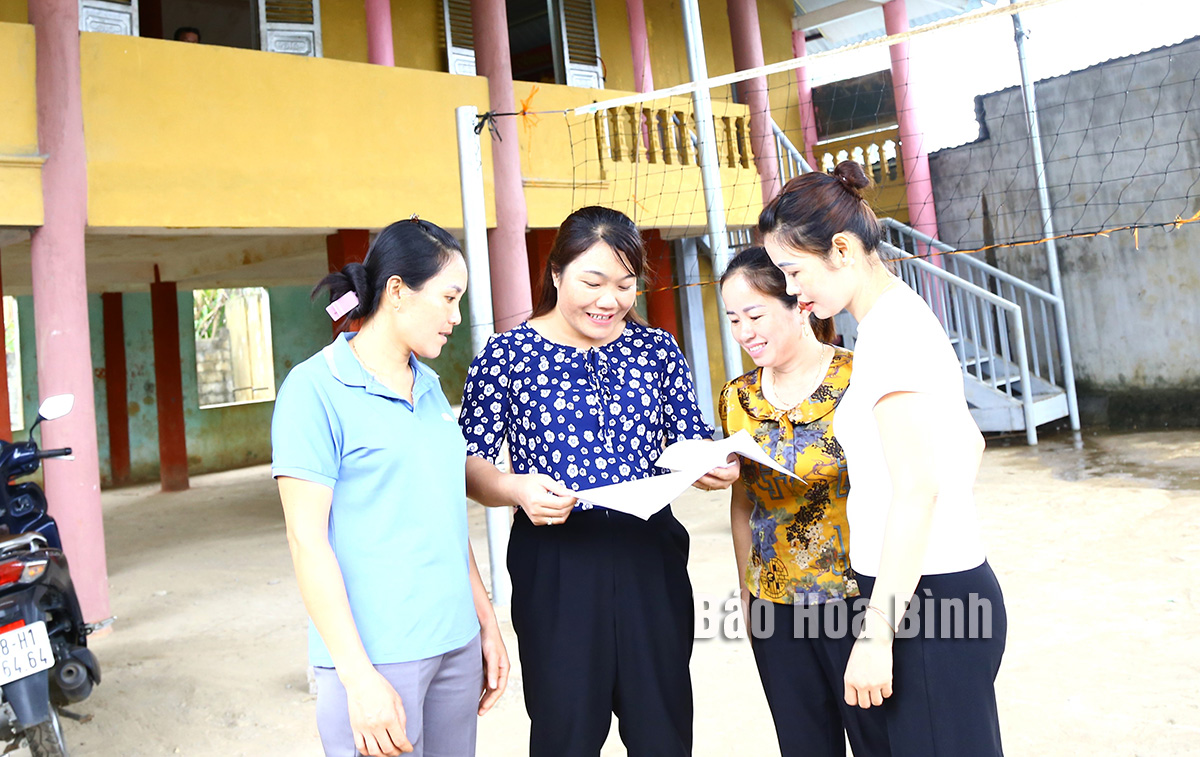
Late Party General Secretary Nguyen Phu Trong’s view on culture has served as the lodestar and a source of encouragement for Hoa Binh in cultural development.
Many cultural
houses have been completed and put into operation in Hoa Binh. In photo: The
cultural house of Doi hamlet in Tay Phong commune, Cao Phong district.
Hoa Binh is home to the six ethnic groups of Muong, Dao, Tay, Thai, Kinh, and
Mong, with the Muong accounting for more than 64% of the local population. Each
of the groups has its own cultural traits, contributing to the province’s
unique cultural tapestry. Over the past years, the province has continued allocating resources to
cultural development.
Cultural preservation, promotion – a key
task
The resolution adopted at 17th provincial Party Congress sets the task of
preserving and promoting the unique culture of ethnic minority groups in tandem
with tourism development, and seeking the dossier of Mo Muong to be included in
the UNESCO List of Intangible Cultural Heritage in Need of Urgent Safeguarding.
Quach Thi Kieu, Director of the provincial Department of Culture, Sports and
Tourism, said local cultural values and heritage have been both preserved and
nurtured.
Numerous cultural activities have been scaled up, generating new products and
values in service of local residents and visitors alike.
Notably, in 2023, the province launched a project aimed at preserving and
promoting the cultural values of the Muong ethnic group and the Hoa Binh
civilisation for the 2023-2030 period. With a total funding of over 500 billion
VND (201,249 USD), this initiative provides significant resources to advance
the cultural sector.
joining hands in cultural development
Following the direction of the Standing Board of the provincial Party
Committee, various departments, agencies, and localities in Hoa Binh have
focused on cultural development.
Despite a host of challenges, Tinh villagers in Tu Ly commune, the mountainous
district of Da Bac, have joined hands in building a cultural house, and
supported the locality’s cultural development policy.
Dinh Van Khuyen’s family has donated hundreds of square metres of land for the
construction of the cultural house. Inspired by his family, many others have
also donated land, workdays, and materials to the project.
A gateway to Hanoi, Luong Son district stands out for its efforts in mobilising
the engagement of different economic sectors in cultural development, turning
itself into a fourth-tier urban area.
Nguyen Duc Dung, Secretary of the district Party Committee, noted that in
recent years, the locality has intensified the movement "All people stay united
to build new-style rural areas and civilised urban areas”.
Vo Ngoc Kien, head of the provincial Party Committee's Information and
Education Board, said such efforts have help create resources for cultural
activities and raise public awareness of the cultural development in the
locality.
Hoa Binh province has carried out multiple programmes and initiatives to revive its cultural heritage which has gradually fallen into oblivion through the ebbs and flows of history.
The most prominent and defining feature in the prehistoric era of Hoa Binh is the Hoa Binh Culture. The Culture was first discovered in Hoa Binh. The significant prehistoric culture represents not only Vietnam but also Southeast Asia and southern China. Through excavations of cave sites in the limestone regions of Hoa Binh, French archaeologist M. Colani introduced the world to a "Stone Age in Hoa Binh province – Northern Vietnam" in 1927. On January 30, 1932, the First Congress of Far Eastern Prehistorians, held in Hanoi, officially recognised the Hoa Binh Culture.
Known as the "Land of Epic History”, Hoa Binh province, the gateway to Vietnam’s northwest, boasts a strategic location and a unique cultural tapestry woven by its ethnic minority communities.
The People's Committee of Luong Son District recently held a ceremony to receive the certificate recognizing Sau Communal House in Thanh Cao Commune as a provincial-level historical and cultural site.
Recognising the importance of cultural heritage preservation in protecting and promoting the value system of Vietnamese culture, and serving socio-economic development in the new period, Party committees and local administrations in Hoa Binh province have identified it as a key task in the cultural development strategy. The province has been making efforts in mobilising resources, creating consensus among people and engaging ethnic communities in preserving and promoting cultural identity.
Hoa Binh province has captured growing attention both domestically and internationally for its distinctive cultural heritage and rich history. Most notably, it has been renowned for its famous Hoa Binh culture, considered the cradle of ancient Vietnamese civilisation. Looking ahead to significant milestones in 2025 and the 140th anniversary of province establishment in 2026, Hoa Binh Newspaper presents a comprehensive overview of the province's development across economic, social, cultural, tourism, and security domains.



